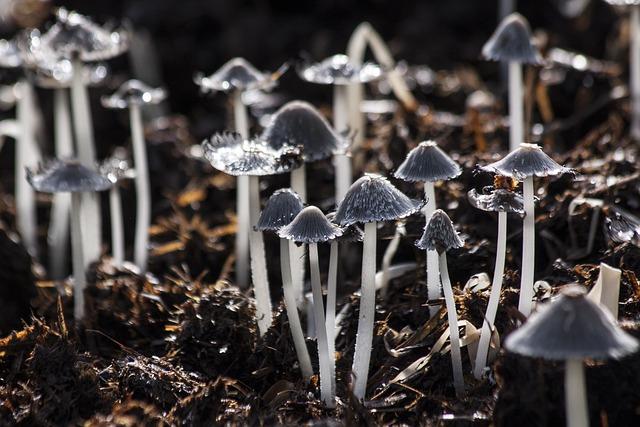- Introduction
- How the Zombie Ant Fungus Controls Its Host
- The Lifecycle of Ophiocordyceps Unilateralis
- Impacts of the Fungus on Ant Colonies
- Evolution and Ecological Importance of the Fungal Parasite
- Conclusion
- FAQs
- References
Introduction
The concept of a "zombie" may seem common in fictional movies, but in the insect world, it’s a terrifying reality. The zombie ant fungus, scientifically named Ophiocordyceps unilateralis, is responsible for turning carpenter ants into unlikely ‘zombies’. This article will examine how this fungus manipulates its host's behavior, its life cycle, the effects on ant colonies, and the ecological importance of this complex parasitic relationship.
By delving into the mechanics of the fungus’s behavioral control, understanding the intricate lifecycle, and exploring its impact on ecosystems, we aim to uncover both the horror and fascination that come with this peculiar trophic interaction.
How the Zombie Ant Fungus Controls Its Host

(Image: Pixabay/@adege)
One of the most astonishing aspects of the zombie ant fungus is its ability to manipulate the actions of its host. Ants infected by the spores of the Ophiocordyceps unilateralis fungus see dramatic changes in their behavior moments before they die.
The fungus begins by infiltrating the host’s body via specialized spores attaching to the exoskeleton. Here, it then invades the ant's muscles and nervous system. This process turns the ant into a mere puppet—forcing it to abandon its routine tasks, climb vegetation, and clamp onto a leaf or twig using its mandibles in what is known as the "death grip."
This strange push toward elevation by the ant enables optimal positioning for the subsequent release of fungal spores. From there, the fungus consumes the ant from within, releases its spores onto the forest floor, and spreads to new hosts lurking below.
The Lifecycle of Ophiocordyceps Unilateralis

(Image: Pixabay/@EyeCandyDesignz)
The lifecycle of this parasitic fungus begins when fungal spores land on an ant's body. The spore then secretes enzymes that start breaking down the external layers, allowing the infection to take hold. Once inside, the fungus makes its way to target tissues and manipulates the ant’s behavior, culminating in its ‘death march.’
After the ant succumbs, the fungus takes full advantage of the nutrients within the dead host and grows a stalk out of the ant’s body, usually emerging from the back of its head. This stalk produces more spores, which are released into the surrounding environment to find new potential victims.
What makes this lifecycle fascinating is that it's not always successful. Only a fraction of spores find an appropriate host, highlighting the delicate balance in this parasitic relationship within its ecosystem.
Impacts of the Fungus on Ant Colonies

(Image: Pixabay/@cp17)
Though this deadly infection seems highly aggressive, its prevalence often remains localized rather than decimating entire colonies indiscriminately. However, the presence of Ophiocordyceps in ant colonies can result in long-term changes those colonies must adapt to.
Workers tasked with protecting the colony may actively seek and remove infected ants far from the nest to avoid outbreaks. Over time, these adaptations help prevent uncontrollable fungal spread, though the risk remains ever-present in certain environments, particularly in tropical forests, where humid conditions incubate fungal growth.
Ecologically, this balance between predator (fungus) and prey (ants) helps ensure that neither population collapses completely, maintaining proper function of local food chains and energy flows.
Evolution and Ecological Importance of the Fungal Parasite

(Image: Pixabay/@stux)
The zombie ant fungus provides valuable insight into co-evolutionary arms races between species. Over time, fungi like Ophiocordyceps have developed sophisticated mechanisms for evading immune detection, manipulating host behavior, and thriving in niche environments.
Scientists also believe that the specialization of the zombie ant fungus serves as a model for studying parasitism and symbiosis, showing how organisms evolve mutualistic or antagonistic relationships that shape broader ecosystems. For example, while Ophiocordyceps is lethal for ants, it has indirect benefits for rainforest biodiversity by promoting nutrient cycles via the decomposition of dead insects.
Moreover, research on Ophiocordyceps and similar fungi has expanded our understanding of pathogen-host chemical warfare, which could inform future studies in pest control, pharmaceuticals, and microbiome research in humans.
Conclusion
The relationship between the Ophiocordyceps unilateralis fungus and its ant hosts is nothing short of incredible. By combining biology, ecology, and evolutionary science, the parasitic manipulation of behavior offers key insights into how complex interactions shape the natural world.
While destructive to individual ants, the fungus plays a vital role in balancing ecosystems. Understanding this balance offers critical lessons in conservation, scientific inquiry, and perhaps even practical applications in other fields.
FAQs
What exactly is the zombie ant fungus?
The zombie ant fungus refers to Ophiocordyceps unilateralis, a parasitic fungus that infects ants, taking control of their motor functions and eventually killing them to release more spores into the environment.
Why is the process called 'zombification'?
It’s termed 'zombification' due to the fungus’s ability to literally control the behavior of infected ants, making them act against their survival instincts before dying—a phenomenon resembling popular depictions of 'zombies.'
Do zombie ants affect human health?
No, the Ophiocordyceps fungi are highly specialized to infect only certain species of insects, primarily ants. They do not pose any direct risk to humans or our health.
Where can I find the zombie ant fungus?
This fungus primarily thrives in tropical rainforests with lots of humidity. Areas in South America, Africa, and Southeast Asia are common zones where this parasitic interaction is frequently observed.

